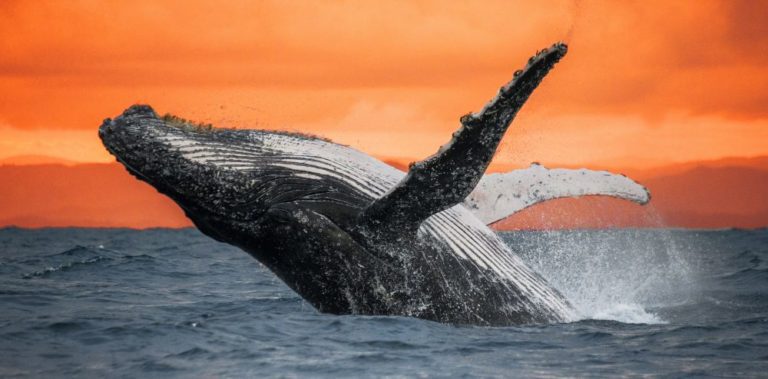The Santa Barbara Maritime Museum (SBMM)’s newest permanent exhibit, opening to the public on Thursday, April 14, 2022, shows visitors how whales help maintain the stability and health of the ocean and help minimize the impact of climate change. The Whales Are Superheroes! exhibit focuses on whale diversity in the Santa Barbara Channel, climate connections and the role whales play in climate change. Taking its aesthetic inspiration from comics and graphic novels, the exhibit incorporates text panels and drone footage to illustrate how whales are helping to save the environment. Whales Are Superheroes! is also part of a countywide alliance of museums, the Santa Barbara Zoo, and the Botanic Gardens to present programming addressing climate change (https://www.sbmuseumsalliance.org/).
According to the World Economic Forum, the failure to mitigate and adapt to climate change is among the biggest global risks for our planet, with significant environmental, economic, and health impacts. While international agreements, including both the 1997 Kyoto Protocol2 and the 2015 Paris Agreement3 address global reductions in CO2 emissions, no global efforts have yet considered the importance of the oceans as a carbon sink and the significant ecological role whales play in mitigating climate change.
Whales make a difference by being an important part of the cycle of marine life. First, as they dive down to feed and then surface to breathe, they serve as nutrient pumps moving nutrient rich waters from the sea floor to the surface where they stimulate and fertilize the growth of phytoplankton. Through photosynthesis the phytoplankton convert large amounts of CO2 to oxygen, helping to sustain life all over the planet. Second, whales also migrate every year from nutrient-rich cold water to nutrient-poor warmer waters for breeding and calving, further stimulating nutrient cycling both vertically and horizontally throughout the world’s oceans.
But the story does not stop during the life cycle of a whale. It continues after they die. Whale carcasses are some of the largest forms of organic matter to fall from the ocean’s surface and sink to the deeper depths of the ocean, including here in the Santa Barbara Channel. These are known as whale falls, providing a feast for some 400 odd species. As these whale carcasses sink to the ocean floor, they take with them about 190,000 tons of carbon in their bodies, which is the equivalent of the carbon produced by 80,000 cars per year! These deep oceans are what we call “carbon sinks,” because they trap and hold excess carbon from the atmosphere, and therefore help to counteract global warming.
The Santa Barbara Maritime Museum invites the community to learn more about our aquatic neighbors and how Whales Are Superheroes! by visiting this new exhibit, along with two new art exhibits, an immersive audio and visual “undersea” experience, and a free Zoom lecture by marine biologist Holly Lohuis.
Whales Are Superheroes! is made possible thanks to the generosity of the following sponsors: Chevron, Dreier Family, Emmett Foundation, Nancy and Frederic Golden, George H. and Olive J. Griffiths Charitable Foundation, Hank and Mari Mitchel, June G. Outhwaite Foundation, Alice Tweed Tuohy Foundation, Donna Weinstein, and the Wood-Claeyssens Foundation.


Leave a Response